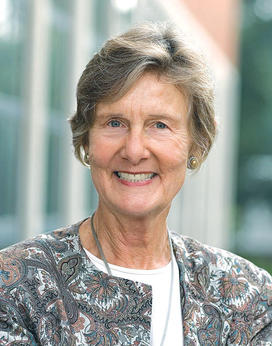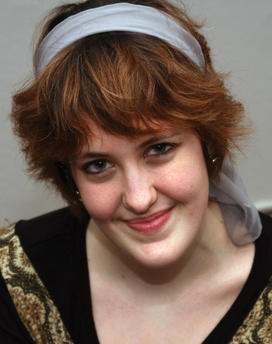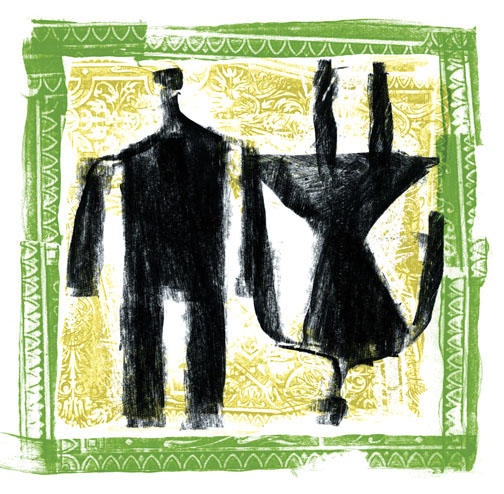Women lag in leadership roles

“Though statistics show that over half of student group leaders are women,” The Daily Princetonian said in an editorial, “the fact remains that almost none of the top, most visible positions in student activities at Princeton are filled by females.”
Among the facts cited by the Prince:
• No woman has been elected president of the Undergraduate Student Government since Nina Langsam ’03.
• For the first time in more than a decade, all 10 eating-club presidents are men.
• Female class presidents “are the exception rather than the norm.” When the Class of 2013 — with an equal number of men and women — elected its president last fall, no women were among the seven candidates.
• In the last five years, Princeton’s Rhodes scholars all have been men (five of the nine Marshall scholars have been men).
• On the Prince staff, only two women have been selected as editors-in-chief in the past decade.
In mid-December President Tilghman noted the Prince’s coverage and other campus conversations about “the critical issue of whether women undergraduates are realizing their academic potential and seeking opportunities for leadership at the same rate and in the same manner as their male colleagues.”

Among the areas to be explored is the “gender profile” of student leaders and how it has changed over time.
Heading the committee is Nannerl Keohane, visiting professor at the Woodrow Wilson School since 2005 and former president of Duke University and Wellesley College.
Keohane emphasized that the group is just beginning its work, but said she was struck by the “number of different things across different parts of the Princeton experience that all add up to women being less visible or less involved at some level or less recognized.”
Undergraduate women hold leadership positions in the residential colleges and in community-service organizations, Keohane said. But she said the committee will look at whether certain activities, positions, or academic majors are associated particularly with women while other activities “are sort of off-limits because they’re only for men — and there are not particularly good reasons for that to be true.”
The Princetonian reported that only five women have served as eating-club presidents in the last five years, half the number of the previous five years. The low numbers can discourage more women from running, said Maria Flores-Mills, the associate dean of undergraduate students who is the University’s liaison to the clubs. “When you consistently don’t see anyone like yourself represented, it becomes so far out of the norm that you perceive it to be not possible,” she told the Prince.
On the academic side, of the 21 valedictorians and salutatorians over the past decade (two valedictorians were selected in 2001), 15 have been men.
Amelia Thomson-DeVeaux ’11, co-editor of the feminist blog Equal Writes and a member of the study group, wrote an opinion column in The Daily Princetonian that called for “a critical examination of the way our campus culture subtly discourages women from the pursuit of success on a seemingly equal playing field.”
Social pressure plays a powerful role, Thomson-DeVeaux wrote: “Traditional socially informed notions of femininity do not include aggressiveness, confidence, or the proactive pursuit of success.” The more that women appear “traditionally female,” she said, “the less qualified for leadership they appear in the eyes of their peers, because the leader we envision is gendered male.”
Jessica Lanney ’10, recently selected as a Marshall scholar and the leader of the Princetonian’s editorial board last year, added that women “often feel like they need to be asked [to run] for power positions” on campus.
Thomson-DeVeaux, the daughter of alumni, said there is a sense on campus “that feminism is kind of an obsolete issue.” The current challenges of being a woman at Princeton, she said, are “much subtler” than they were for her mother, Vivian Thomson ’77, who came to the University in the early years of coeducation.
Keohane said that when she spoke with former Princeton president William G. Bowen *58, she was intrigued to hear “that the earlier generations of women tended to be more engaged in terms of the numbers in the kinds of activities we’re now describing ... you would expect the tendency to be the other way after we’ve been here for a while.”
Bowen said in an interview that the first women at Princeton were “really extraordinary people” — highly talented academically, with a spirit of adventure and a desire to contribute to the University. “It’s inevitable that over time, that sense of adventure will diminish,” he said.
Keohane said the committee will seek alumni views to help determine if what is happening on campus “has implications after Princeton.” A new Web site (www.princeton.edu/scuwl/) will collect thoughts and reactions.












1 Response
Walter M. Weber ’81
9 Years AgoProbing gender disparity
Women are equal to men. But they are not the same as men. Thus, while there are of course individual variations, women and men as a whole will tend to diverge in their behavior in certain respects.
The Princeton administration seems not to consider this as a conceivable explanation for the gender disparity in undergraduate leadership roles (Notebook, Feb. 24). Rather, the administration presumes something untoward is going on, as it is already asking — before the campus study of this subject has even been conducted — for “remedies” to the situation.
Men are vastly overrepresented in the criminal population, in car accidents, and in jails. Is this a gender disparity that needs to be remedied? Or could it instead be evidence of inherent gender differences — differences that might in some cases actually favor women?
The administration might “remedy” the disparity, either by inducing women to assume leadership roles that otherwise might not be their top priority, or by tilting the playing field to give women a competitive advantage. But would that not be to impose an artificial vision of reality upon students — to insist that the administration’s philosophy trump the choices students themselves have made?